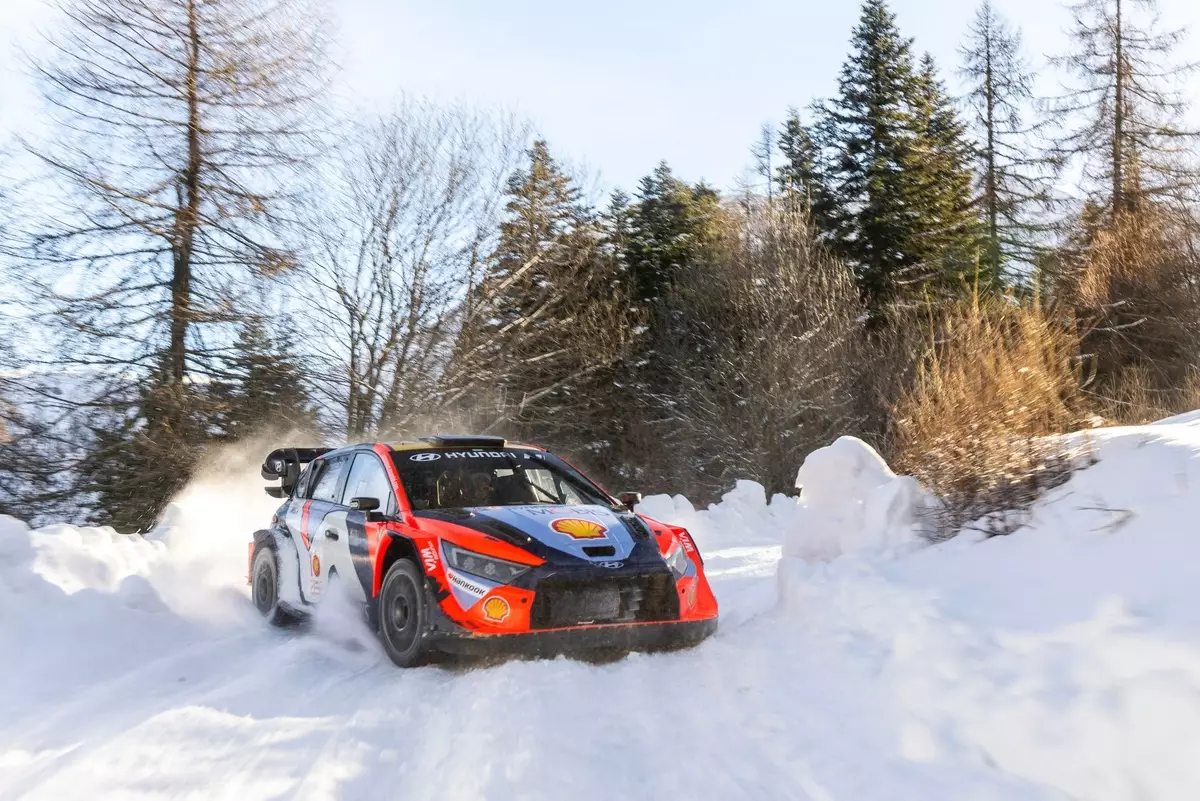The World Rally Championship (WRC) is continuously evolving, and the 2025 season brings significant changes that are reshaping how teams and drivers approach the sport. As the FIA has decided to remove hybrid power from the Rally1 vehicles, the landscape of rallying is about to witness a transformation that many believe will enhance the driving experience. One of the prominent voices in this transition is Ott Tanak from Hyundai Motorsport, who has openly discussed the implications of these regulatory changes.
The removal of hybrid systems in the 2025 WRC cars marks a significant departure from the complexity that hybrid technology introduced in recent seasons. The Rally1 vehicles, now without the assistance of an extra 130 horsepower provided by hybrid components, are expected to exhibit different dynamics on the rally stages. Although the elimination of hybrid power means a potential reduction in overall speed, it has produced a lighter car—approximately 87 kilograms less—which could enhance maneuverability and handling.
Tanak’s insights suggest that these changes bring the cars closer to the traditional rally experience. He describes the new regulations as creating a rally car that feels more straightforward and intuitive to drive. The complexity brought by hybrid strategies and the need to manage electric energy output during stages has been replaced by a more “basic” driving experience reminiscent of earlier rallying days. This transition may forge a path for returning to the roots of rally driving, where the focus was primarily on handling, skill, and partnership with the vehicle.
One of the striking aspects of Tanak’s perspective is the emphasis on enjoyment behind the wheel. He mentions that the current cars feel like true rally cars, allowing drivers to fully immerse themselves in the driving experience rather than being bogged down by intricate strategies. For motorsport purists, this change is likely to be welcomed. The focus shifts back to the essentials of driving, where the relationship between driver and machine can flourish without the added layer of hybrid systems.
Furthermore, the reduction in vehicle weight correlates with better agility, enabling drivers to navigate challenging terrains with greater confidence. Tanak’s positive remarks on the new specifications highlight a potential revival of competitive spirit among teams, likely to stimulate thrilling competition as drivers adapt to these lightweight vehicles.
As the new control tyres supplied by Hankook come into play, this aspect of the regulation change will also be critical. Although Tanak expressed concerns about the unknown variables tied to the performance of these new tyres, his overall sentiment remains one of optimism. Having gained familiarity with the i20 N and a solid foundation from the previous season, drivers like Tanak are approaching the new season with renewed confidence. With the departure from hybrid complexities, attention will turn more intensely to tyre performance and handling characteristics.
This emphasis on tyre technology is not just about the feel of the car; it’s also about how it performs on various surfaces and conditions. With years of experience in different teams and cars, drivers now have a chance to leverage their skills without the complications of hybrid management.
As the WRC enters the 2025 season, the regulatory changes signify a pivotal moment in the sport’s history. The removal of hybrid technology simplifies the driving dynamic, aiming to enhance the overall competition and the enjoyment of rallying. Drivers like Ott Tanak see the potential of these changes and anticipate a thrilling season ahead.
The evolution of the WRC is a reminder of the balance between innovation and tradition. While the sport embraces technological advancements, it is the fundamental skills of the driver that will take center stage once again. The upcoming Monte Carlo rally promises to showcase this new wave of Rally1 cars, where simplicity, excitement, and a return to classic rallying principles may redefine what it means to be a rally driver in the modern era.

